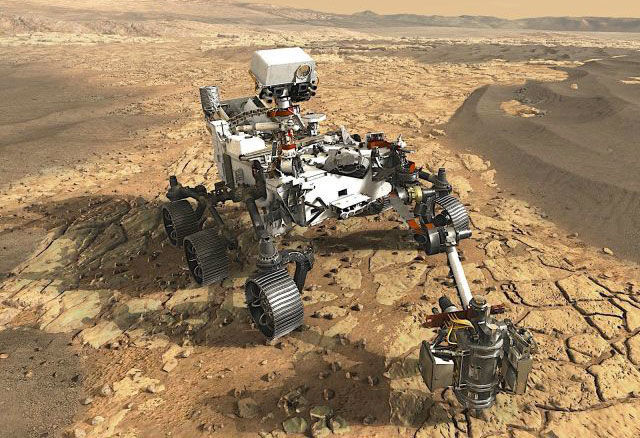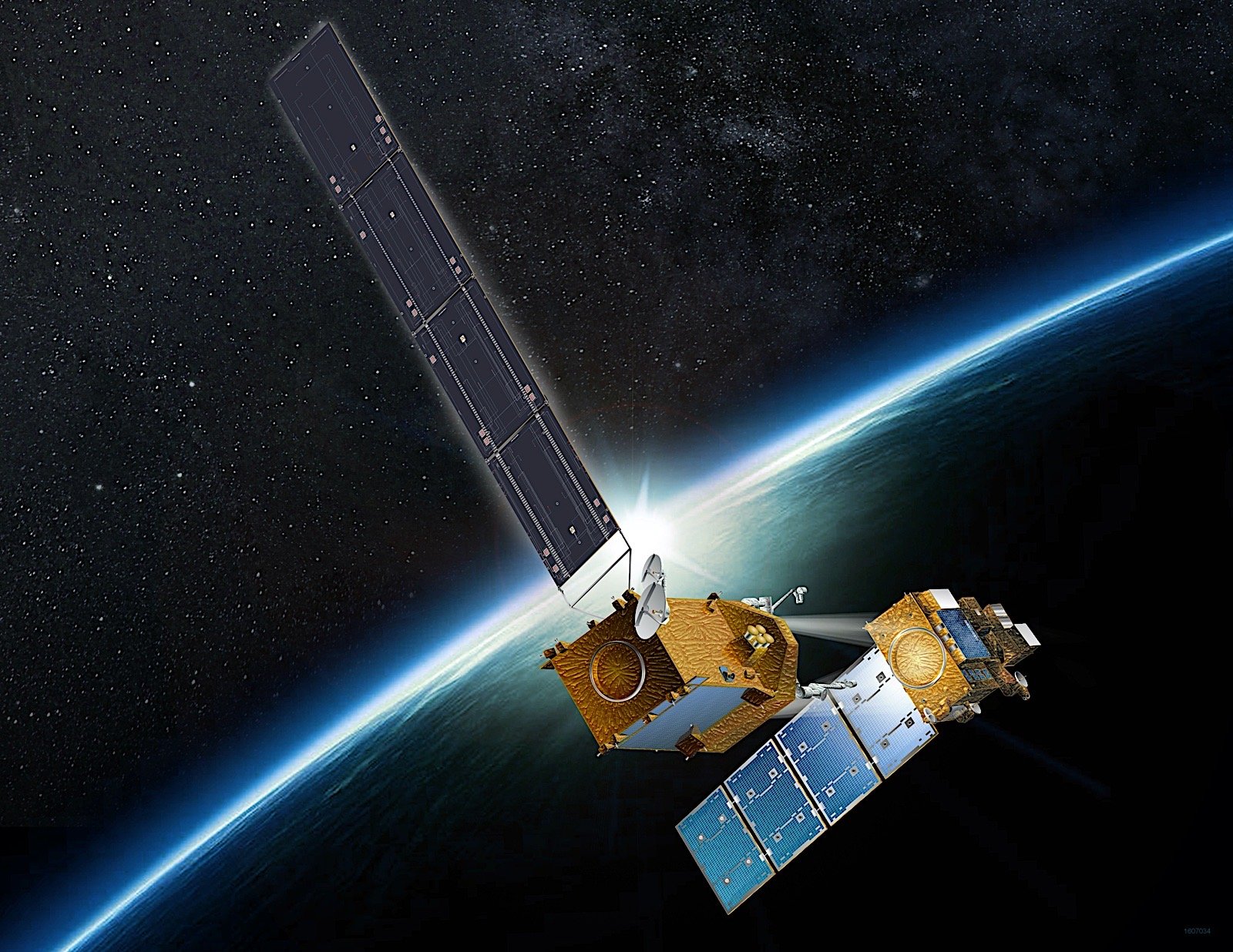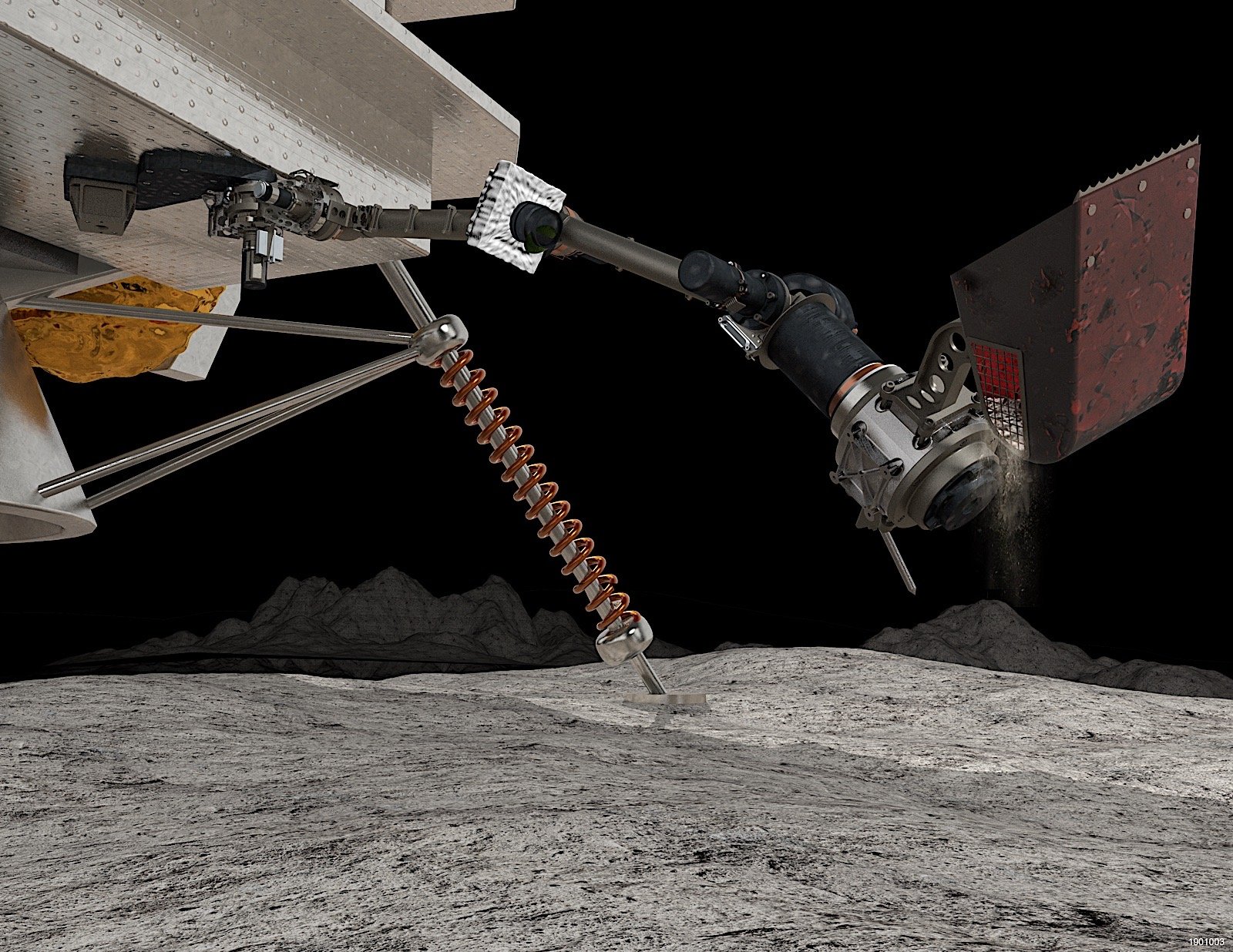
NASA
Despite best efforts,we're still decades if not generations away from regularly living and working off-planet -- whether that's in LEO habitation rings,moon bases,or on the Martian surface. Until humans can colonize space ourselves,we must rely on robotic orbitals,landers and rovers to physically interact with the galaxy around us. As Lucy Condakchian,General Manager of Robotics at Maxar,noted to an assembled audience at TechCrunch Sessions on Tuesday,actually touching the stars is still no easy feat.
Maxar Technologies knows a thing or two about building space-based systems. The company has been developing and deploying satellite technology since 1969. It's built robotic arms for NASA since the Apollo era,as well as for commercial customers -- over 75 in total. In fact,all five robotic arms currently on the surface of Mars were built by Maxar.
"I would absolutely call it a collaborative partnership," Condakchian told Engadget. "Over the years as NASA has changed,what their pursuits are,what our administration has asked them to do,we just bend in flux."
The company's sixth Mars-bound arm,dubbed the Sample Handling Assembly (SHA),will be aboard the Mars 2020 Rover. This mission is part of NASA's larger Mars Exploration Program and is scheduled to launch in July.
Once safely upon the Red Planet,the SHA will drill into the Martian dirt to collect soil and rock core samples from the most interesting sources it can find,then squirrel them away in a secure cache on the planet's surface. The hope is that a future mission might be able to collect the samples and return them to Earth for study.
"You build on the heritage," Condakchian told the Sessions audience,pointing out that the first arm to arrive on the Martian surface was barely a meter long with "five degrees of freedom and five joints that actually moved." But over the course of numerous iterations,the latest arm boasts double that length with seven joints and seven degrees of freedom.
The company is also working on a sampler arm -- conveniently named the Sample Acquisition,Morphology Filtering and Probing of Lunar Regolith or SAMPLR -- as part of the 2024 Artemis mission to the moon. The $5 million piece of space hardware will be the first robotic arm deployed to the moon in 50 years,where it will sift through layers of dust to determine "the geotechnical properties of lunar regolith."
SPIDER will be integrated with the spacecraft bus Maxar is building for @NASA Restore-L project,which will refuel a satellite in low Earth orbit. SPIDER will enable spacecraft components to be robotically assembled and reconfigured while on-orbit. Learn more: pic.twitter.com/XfPquzmsKi
— Maxar Technologies (@Maxar) January 31,2020Maxar is even looking beyond planetary surfaces and is currently developing arms for use in orbit to service and repair aging satellites,such as the SPIDER for NASA's Restore-L program. However that environment provides its own unique set of challenges compared to planetside operation.
On Earth,"you know where you're going to set that robotic arm,you know what [conditions] you'll encounter... and you also can go and service it," Condakchian said. "Our robotic arms,once they're in space,we're done. If it's mission critical,it cannot fail. It has to survive." And in space,she continued,"You've got radiation to deal with. You've got temperature swings,you've got materials that you cannot use."

As such,each arm is largely built to the specific mission requirements,though some overlap between individual mission designs does occur. "We don't want to reinvent the wheel every single time,right?" Condakchian explained. "There's definitely elements of it that we build on and we've learned that this kind of actuator design works well for this type of application gives you this type of output,etc... Most of our government customers actually want a lot more tailored solutions."
Recent advances in 3D printing are helping tailor those solutions more easily and with a greater degree of precision than conventional subtractive manufacturing techniques. Condakchian points out that issues of around machining components to the exacting tolerances that modern spacecraft require are negated with 3D-printed pieces. What's more,"some parts are going to actually be lighter because your load paths within the components of that robotic arm," she said. "You don't need to think about how to machine this off of a block of aluminum or titanium."
Improvements in AI systems are also improving the performance of these arms,providing them a greater degree of autonomy. However,that expanded capability must be carefully balanced against the massive investment required. "It's a balance of adding that new capability and technology without impacting the integrity or increasing the risk of the mission," Condakchian told the Sessions audience.

Currently NASA retains human-in-the-loop oversight,wherein if the rover detects an anomaly in the environment or its actions,it can enter a Safe Mode and phone back to mission control for clarification and further instruction. Problem is that it takes a signal 13 minutes to make it from Mars to Earth plus another 13 minutes back plus however much time it takes the NASA boffins to determine the best course of action. It's a slow process but still better than wrecking a multimillion dollar piece of equipment because the onboard AI flummoxed itself.
Maxar is also looking into wireless energy transmission as a potential weight saving measure. "Trying to send energy down the whole robotic arm to get video feedback,that's extra mass and that's extra power draw," Condakchian said. "That's a limiting factor."
And though only two of the five robotic arms on Mars are currently operational,Condakchian explained,the inoperable ones from the Spirit and Opportunity rovers as well as the Phoenix lander are actually rugged enough to be brought back online and put back to work if we were somehow able to clear the Martian dust that has caked their solar panels. If only they had an extra arm equipped with a squeegee.











 加载中,请稍侯......
加载中,请稍侯......
Comments